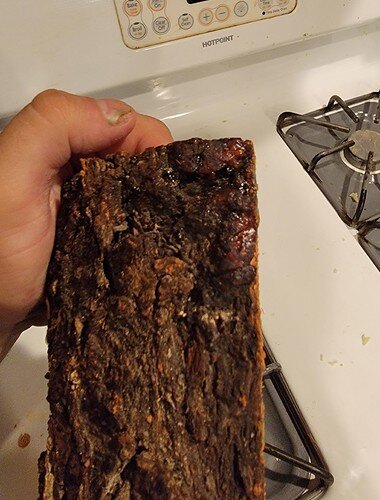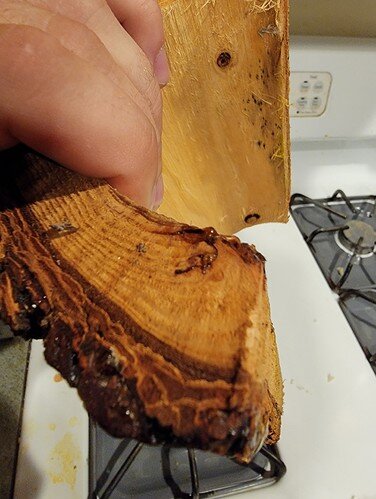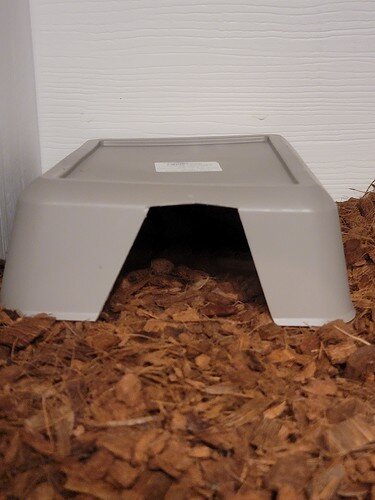So its come to my attention the hides that are regularly available are pine. I just baked one of the hides at 250 degrees for 3 hours to kill any mites and eggs. However, sap started to cook out of it. Considering pine sap is toxic to most herps, im wonering are these hides even actually safe for what they are sold for? And if not does anybody have good alternatives? Ive had no issues with them so far, but now that im baking all of them, im not sure if the sap that baked to the surface creates a problem…
Personally I wouldn’t risk it but we’ll see what other people’s opinions are. As far as alternatives I like to make my natural hides. For premade ones I’ve heard good things about reptibasics plastic hides but for natural ones I’ve made hides out of coconuts (but they’re small for snakes, I use half for frogs and full ones for cresties). You could also try to make a half-log like hide out of cork tubes.
Ive tried getting cork tubes, they always arrive shattered or moldy :(. I honestly think cork flats are gonna be the better way to go there especially once i switch to bioactive… for now, i think ill switch to plastic like this, just to be safe until i can afford to replace all of their hides.
I’ve gotten all of my cork in person at expos. Plastic is probably a good idea at least until you get rid of mites.
Fair facts. I cooked the hides good, but for now it would basically be a hiding spot for the survivors until i kill everything haha.
Make sure you get rid of all substrate as well and use paper towels.
I assume this is in reference to the mites. Yes, all substrate is being tossed. I just have 29 enclosures to go through, so they arent all empty yet. I have 600 reptizorb pads, so im switching to that until the infestation is gone. Ive also sprayed the trash bag the substrate is in has been sprayed with poison after each enclosure to try and keep any mites from escaping the trash bag until ive finished clearing all the tanks.
Another thought for hides is simple cardboard boxes, like from cereal or crackers. Most snakes love paper towel tubes. Admittedly less inherently aesthetically appealing, they can be decorated with hot glue and fake plants, cork, whatever else if you want to go that route. Advantages include availability, cost, safety, and disposability. That’s a definite plus for quarantined animals. I don’t use them in my display vivs but I do use them.
I thought about this, but thought they may mold in 60% humidity, so didnt think it would work well. Though i bet for coulebrids (please forgive the spelling) it would work awesome!
Excellent point on the humidity! I don’t suppose the cardboard would hold up well long term in 60% humidity. Still helpful for quarantine, maybe. I have corn snakes, so viv humidity is not an issue. (Gotta say though, I currently live in Mississippi. I find ambient humidity is an issue for we humans!  )
)
Yes, quarantine would work great as you dont usually quarantine with substrate 
I’ve never kept snakes on pine so I have no first hand experience however Ive talked to quite a few people over the years
All references I’ve read (about actually studies) only mention respiratory type issues with pine, which includes kiln dried . I’ve know people who still keep their animals on pine, decades without issue. With rats they chew it up and create dust and that can be inhaled then can cause issues, it also comes up in my wood working hobby, wood dust in general is bad, but pine is one of the worst.
Snakes don’t make dust so that’s not really an issue with them. When it comes to the oils I’ve never seen anything thats shows it’s toxic to snakes, even the outgassing being inhaled. I see it repeated a ton, but an actually study or even a quote from a scientist, any kind of source at all, I got nothing. i looked years ago when a debated started up and never found anything. I know it’s toxic to other animals and it’s not good for us even.
But if we talk anecdotal evidence, a lot of snake keeper keep snakes on pine for decades, both shaved and klin dried, they don’t chew and make dust, many rats are kept on pine, rats do chew it up and eat it, snakes eat rats, still doesn’t seem to be issues. If someone knows I’m mistaken, I’d love to hear about it.
Cedar on the other hand, will kill your snake and not even that slowly sometimes. This is well documented, don’t even consider it. Even if it’s pretty, smells good, resists rot better than anything we use and is basically the perfect wood besides the killing part.
With that said, that hide looks nearly impossible to clean and the double opening isn’t ideal either. That’s why I wouldn’t use it personally.
Never had an issue with the double opening, as i always put it against the backwall of the tank, leaving only 1 opening left, the oils are definitely my bigger concern. Think im gonna change to plastic for now just to be safe until i can afford to replace with alternate naturalistic hide. They seem just fine with simple hides, they just look ugly haha.
Oh! Btw, if it helps you at all, the reason why pine is “Bad” is because of the phenols it contains. When it is heated up, it releases them in the form of gas which over time causes respiratory issues. This is usually only a problem with heated tanks or vivs because the pine is directly exposed to heat and usually has poor circulation. That is why reptiles in the wild encountering pine hardly bat an eye. Its all about the concentration and exposure over time. You will be able to find alot more just by looking up phenol toxicology rather than the toxicity of pine itself. Kiln dried supposedly gets rid of this problem, but there are other studies that say kiln dried can make it worse, so i just avoid the situation all together since there are better options. My main concern was if the oven is can bake the oils out, can the CHE? If so, then phenols would be getting introduced to the area they are dorectly hiding which could cause harm over time such as refusal tobeat and respiratory problems.
Hope this helps 
I’d go back to decades without issues and if phenols are the problem, aspen, cypress, coconut all have some also. But like you said it’s about concentration and exposure. I’d imagine the type of phenols too. All of which I don’t know enough about to compare each other
Fair, im sure theres a large difference between if i cut down a pine tree in my backyard, ground it up, and threw it in a tank, than if i bought store cured pine shavings. Then mix in humidity, tempersture, enclosure type, etc. I think its one of those things thats so situational, that people just decided it was better to avoid it and advise avoiding it, than chancing it knowing if the stars and the moon aligned, it could kill your animals. Then that avoidance turned into the shun cult, and took off from there. Like most things, theres likely some truth in why its avoided, but not to the extreme most would claim.


